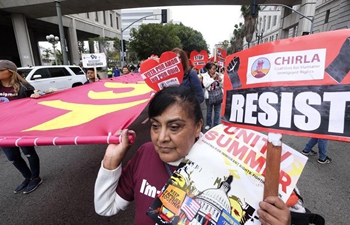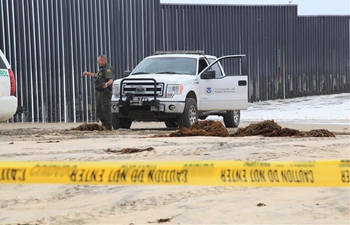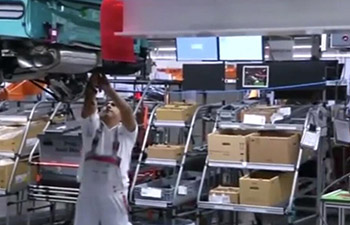LOS ANGELES, May 4 (Xinhua) -- Several eruptions from Hawaii's Kilauea Volcano from Thursday night to Friday morning damaged at least two homes and forced thousands of residents to evacuate, the authorities said, reporting no casualties so far.
According to the Hawaii County Civil Defense, the latest eruption happened at 6:40 a.m. Friday, which was triggered by an earthquake centered in the south flank of Kilauea Volcano at a depth of 6.9 kilometers.
Friday's eruption is the third eruption from the volcano in 12 hours. The first started in late afternoon of Thursday and ended at about 6:30 p.m., creating a fissure that sent lava soaring as high as 125 feet (22.8 meters) into the air.
The second eruption around 1:30 a.m. Friday lasted for about two hours.
Pictures posted online showed that a thick plume of smoke and ash rose Thursday from the Puu Oo Volcano, located roughly halfway between Kilauea Volcano and the nearest community Leilani Estates of Puna district.
At least a dozen small earthquakes rattled the region since midnight, according to the U.S. Geological Survey.
The eruptions forced nearly 1,500 people to flee from their home. Local residents received alerts from country and city officials to prepare for evacuation this week.
Hawaii County fire officials are also warning of extremely high levels of dangerous sulfur dioxide gas in the evacuation areas and are reiterating message to residents to get out of the community until the threat has passed.
The Hawaii governor activated the National Guard to help with evacuations and provide security to about 770 structures left empty when residents sought shelter.
"I just got off the phone with FEMA and they are mobilizing resources for the Hawaii Island lava event. They are monitoring for forest fires, power outages, and water supply disruption," Brian Schatz, U.S. Senator from Hawaii, tweeted after Thursday's eruption.
Kilauea Volcano has erupted periodically for decades, and scientists said they have no way of predicting how long the eruption will continue.
Asta Miklius, a geophysicist with the U.S. Geological Survey's Hawaiian Volcano Observatory, told local CBS news channel: "There is quite a bit of magma in the system. It won't be just an hours-long eruption probably, but how long it will last will depend on whether the summit magma reservoir gets involved. And so we are watching that very, very closely."













